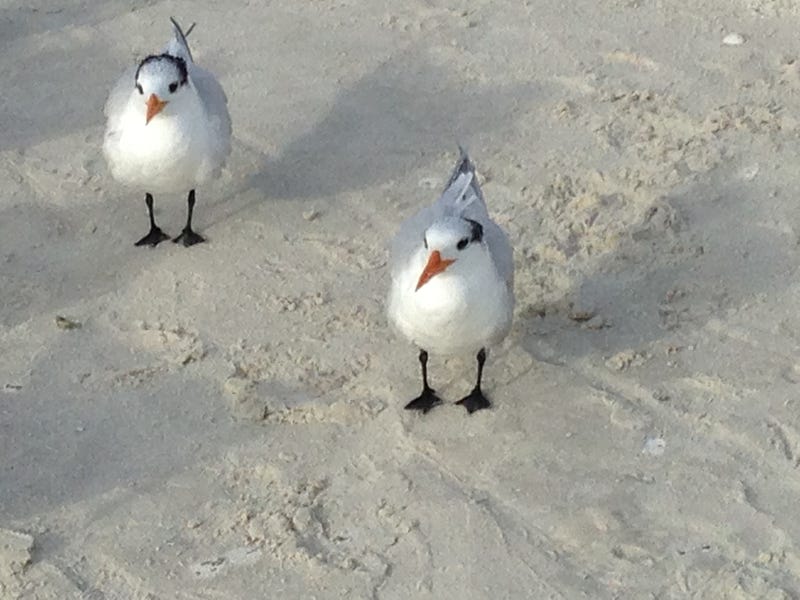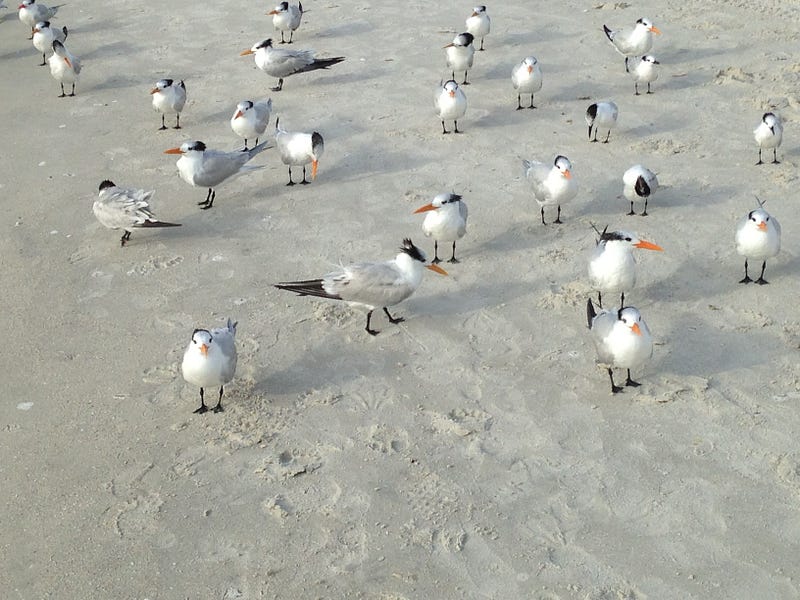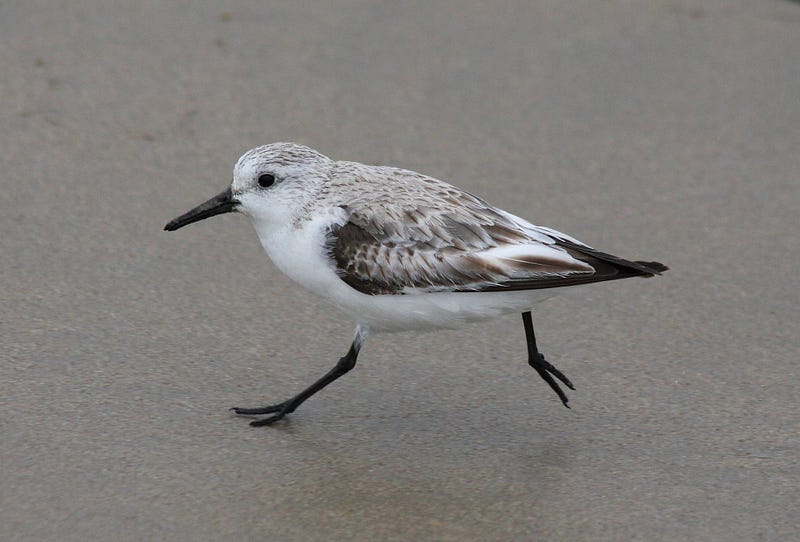It’s been about three months since I introduced the concepts of talent and skill, and gave some suggestions for cultivating your skill in observing wildlife. One of the critical aspects of furthering skill is practice and consistent use, so I thought this would be a good time to test how you all have been doing. Today, I’m going to be using a challenging subject: shorebirds.
Take a look at the top picture and think about what you see. There’s a lot going on, isn’t there? How about a more close up view.

These are the most common individuals in that picture, a white and gray bird with black legs, black on the back of its head, and a deep orange bill. These are royal terns, Thalasseus maximus. Now, let’s zoom out again slightly.

Look closely at this latest image. What do you see?
—
—
—
—
There are mostly the same royal terns as the close up picture, but there are a few individuals that are a bit different. At least three individuals have a black bill, not an orange one. They aren’t royal terns. Terns sometimes like to gather on the beach in large, multi-species flocks (the top picture is actually a fairly small gathering). Take a close look at the individuals with the black bills and see if you can’t notice something else different about them.
—
—
—
—
They are a close relative of the royal tern called a sandwich tern, Thalasseus sandvicensis. It got this somewhat odd name because of the whitish-yellow tip on the end of its black bill, which makes it look like it has just dipped the bill in mayonnaise. Don’t feel too bad if you couldn’t see this in the picture, the light tip blends in well with the surrounding sand.
However, those two species of tern aren’t the only things in that picture. There are a couple of gulls, as well as some longer-legged brown birds on the periphery. These are a common kind of sandpiper known as a willet, Tringa semipalmata. In the far distance, there are some small blurred shapes that are likely the smaller sandpiper known as a sanderling, Calidris alba.

Going beyond the animals, take a look at their surrounding environment. The tide appears to be at low ebb. You can see tufts of dune grass along the high tide line and larger patches farther back. These are important for maintaining the beach and limiting erosion. The sand also carries the impressions of innumerable people and animals that have walked on it.
So, how do you feel you did? The good news is we aren’t in school. You’re not getting graded on this. Much like ‘Whose Line is it Anyway?’, the points don’t matter. What matters is constantly using, testing, and refining your visual and auditory skills (don’t forget, you can pick up on a lot of things in nature via sound as well as sight). Shorebirds are particularly challenging. Many of them look similar to each other and they often group together like in these pictures. However, that also makes them well suited for an exercise like this. When things look similar, you have to push to limits of your skill in order to pick out subtle differences.
Keep at it and don’t feel discouraged if you don’t feel you did well on this. For one thing, it’s not a perfect analog of real life, which would also include movement and sound as important factors. Just keep practicing, and remind yourself that observing nature is mostly skill, and only a little bit talent.